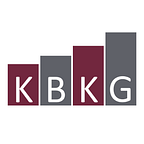KBKG Tax Insight: Minnesota Introduces an Alternative Simplified R&D Tax Credit
In an effort to further stimulate the Minnesota economy, state Senator Julia Coleman and House Representative Kristin Robbins introduced S.F. 2970 and H.F. 3316, respectively. Both bills would add a new methodology for taxpayers to utilize in calculating its Minnesota R&D Tax Credit. It is modeled after the federal Alternative Simplified R&D Credit (ASC) methodology.
Minnesota’s R&D Tax Credit is a percentage of the incremental QREs which exceed a taxpayer’s base amount. The new methodology differs from the current in determining the base amount. The proposed alternative simplified methodology calculates a base amount equal to 50% of the average QREs incurred in Minnesota during the three prior taxable years. Whereas the current methodology requires taxpayers to determine the first year it incurred both qualified research expenditures (QREs) and gross receipts (which could date back to 1984). The proposed legislation would only require taxpayers to substantiate QREs for the current and three prior taxable years. As such, substantiating the base period under the new methodology would be much easier, particularly for large taxpayers with high gross receipts or with complex corporate structures. It is important to note the credit rates remain unchanged (i.e., 10% of a taxpayer’s incremental Minnesota QREs of $2 million or less, plus 4% of such incremental Minnesota QREs exceeding $2 million) with the proposed legislation.
If either of these bills were enacted and signed into law, it would give Minnesota taxpayers a choice between the two methodologies when calculating its state credit, beginning with the 2022 tax year.
KBKG Insight:
A taxpayer’s gross receipts attributable to Minnesota has long been a hurdle to claiming the state R&D tax credit because higher gross receipts equate to a higher base amount a taxpayer must clear with its current R&D expenditures in order to receive a tax credit. By adding the option for taxpayers to determine its base amount on only QREs, many Minnesota taxpayers would likely see significantly higher R&D credits at the state level.
What Opportunity Does this Change to the Minnesota R&D Tax Credit Create?
Should this bill pass, Minnesota taxpayers would have an option to elect a credit methodology providing them the maximum tax benefit. Also, remember that the federal R&D credit was made permanent as part of the PATH Act of 2015, and it may be claimed in addition to the state credit.
To learn more about the R&D Tax Credit, contact our experts.
ACTION STEPS: To find out how KBKG can assist you, visit: https://www.kbkg.com.
» Download KBKG Tax Insight: Minnesota Introduces an Alternative Simplified R&D Tax Credit
About the Authors
Paul McVoy — Principal
New York
Paul McVoy is a Principal for KBKG’s R&D Tax Credit Consulting practice, overseeing the practice from our New York office. In this role, Paul devotes his time to consulting companies in maximizing their R&D tax credit claims. Prior to joining KBKG, Paul was a manager at a Big Four accounting firm out of the Philadelphia, San Diego, and Los Angeles offices. » Full Bio
Michael Maroney — Director
Midwest
Michael Maroney is a Director with KBKG at our Chicago, IL office. He advises clients on tax matters related to federal and state R&D tax credits. He has advised numerous Fortune 1000 clients across a variety of industries. He has successfully defended his client’s R&D claims before the IRS and state taxing authorities. He has been an instructor on these topics for numerous CPA and industry associations and has authored articles related to federal and state R&D tax credits. » Full Bio
